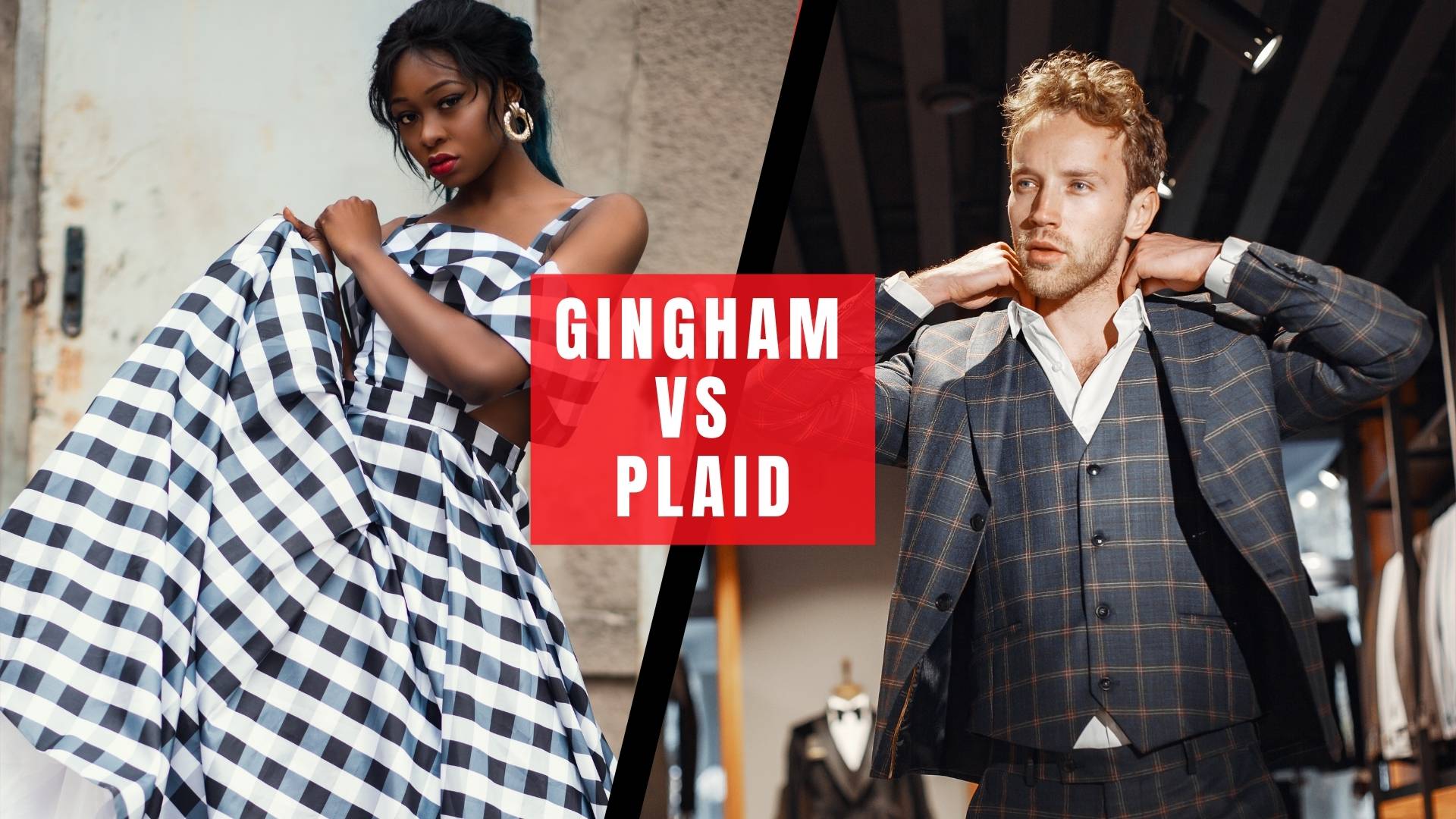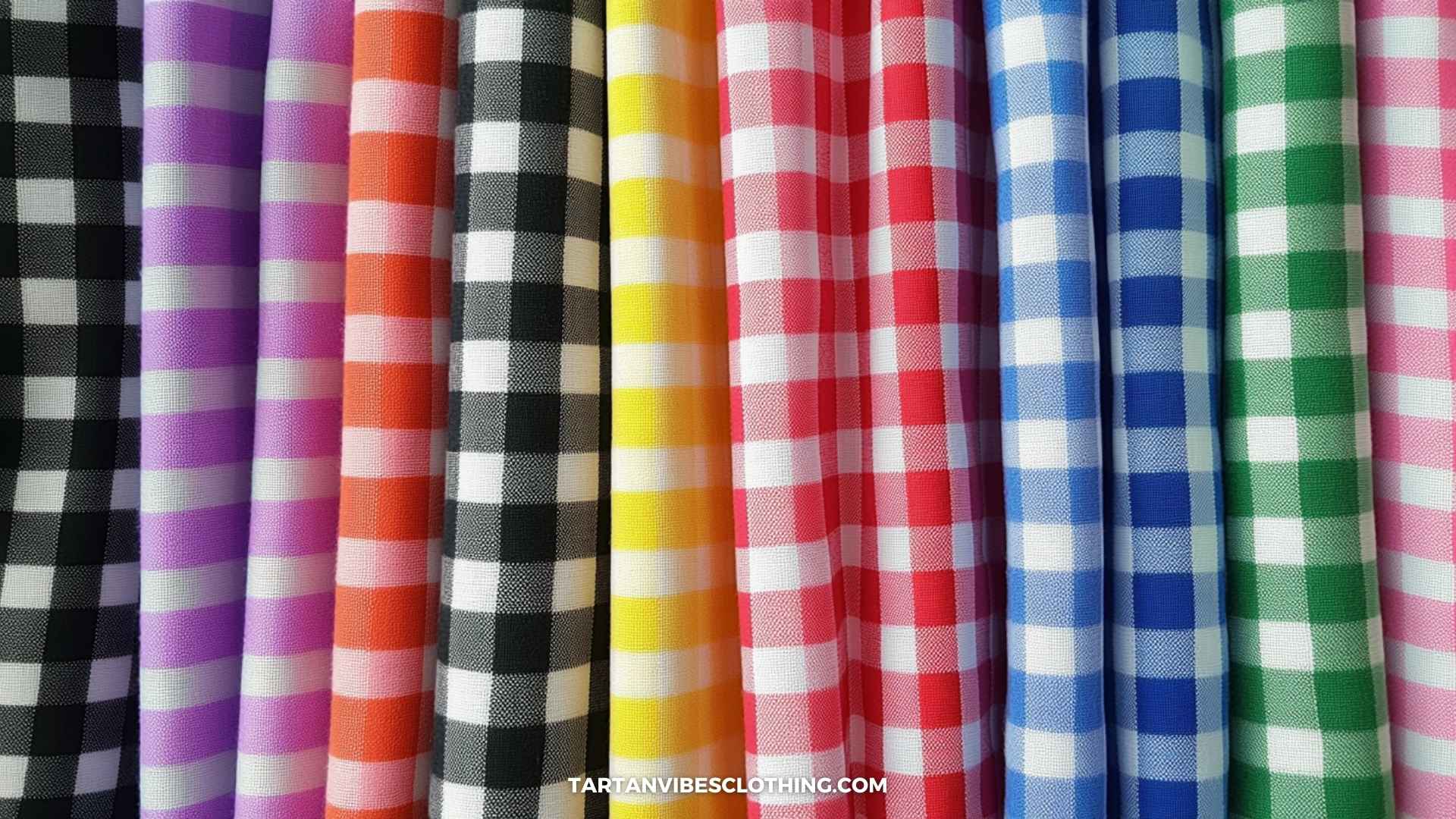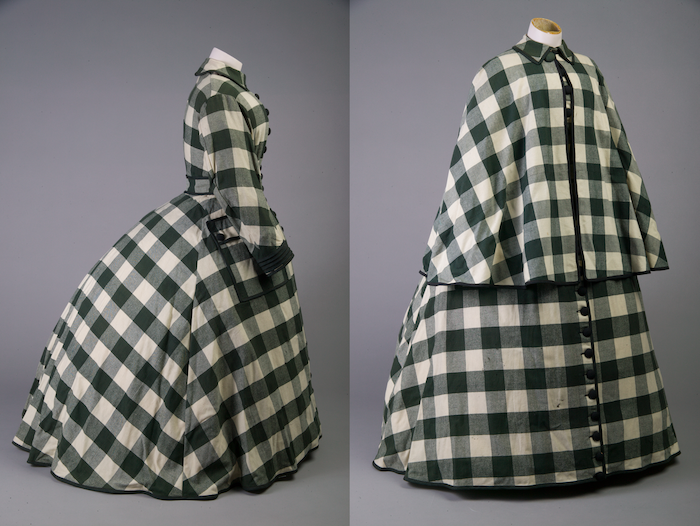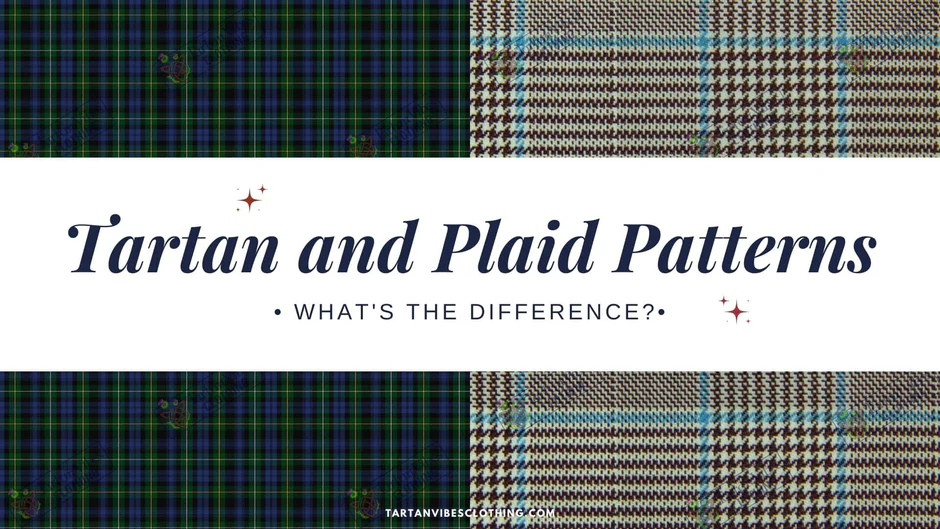Table of Content
Regarding timeless patterns, gingham and plaid often find themselves at the center of discussions in fashion and home decor. While both are undeniably popular, they’re far from interchangeable. Understanding the unique features, history, and cultural relevance of gingham vs plaid is essential for making informed style choices.
At first glance, gingham and plaid may look alike with their intersecting lines and grid-like designs. But dig deeper, and you’ll uncover fascinating differences in their origins, patterns, and uses. Ready to dive into the details? Let’s unravel the charm behind these iconic patterns.

Feature |
Gingham |
Plaid |
Origins |
Southeast Asia, later popularized in Europe |
Scotland and North America |
Pattern |
Simple, even checks of two colors |
Complex, multicolor grids and stripes |
Colors |
Usually two tones, often white and one other color |
Wide variety of multicolor palettes |
Fabric Weight |
Lightweight, often cotton |
Wool, flannel, and heavier fabrics |
Cultural Ties |
Associated with casual, rural charm |
Linked to Scottish clans and heritage |
Common Uses |
Summer dresses, shirts, and tablecloths |
Scarves, flannels, kilts, and jackets |
Understanding the difference between gingham and plaid is essential whether you’re shopping for clothes or decorating your home. Let’s dive into the details!
Conceptual Difference Between Gingham and Plaid
1. What Is Gingham?
Gingham is the ultimate example of simplicity in fabric design. This lightweight, woven material is characterized by its perfectly symmetrical checkered pattern of two contrasting colors—often white paired with red, blue, or black. Made from cotton or linen, gingham radiates a fresh, casual charm that feels at home on a picnic table as much as in a summer wardrobe.
Ever wondered why gingham feels so effortlessly timeless? Its clean lines and balanced checks evoke a sense of order and elegance, making it a go-to for fashion and home decor.
Types of Gingham Patterns

- Small-Check Gingham: Think picnic tablecloths or school uniforms—perfect for a subtle, refined touch.
Medium-Check Gingham: Common in sundresses, casual shirts, and even aprons, this size balances boldness and tradition.
Large-Check Gingham: Designed to make a statement, this oversized pattern is often seen in jackets, bags, or standout home accessories.
2. What Is Plaid?
Plaid, on the other hand, is the epitome of versatility and variety. Unlike gingham’s two-color rule, plaid features a dynamic combination of intersecting vertical and horizontal stripes in multiple hues. While its roots lie in the tartan patterns of Scottish clans, plaid has since evolved into a broader category of fabric patterns embraced globally.
Imagine plaid as the more adventurous cousin of gingham—it’s bolder, more colorful, and effortlessly cozy. Whether it’s the rugged charm of a flannel shirt or the elegance of a tailored plaid suit, this pattern adapts to countless styles and occasions.
Popular Types of Plaid Patterns

- Buffalo Plaid: With its bold red and black squares, this pattern screams “cozy winter vibes” and is a staple in flannel shirts and cabin decor.
Tartan Plaid: Steeped in Scottish tradition, each tartan pattern represents a unique clan. Today, it’s celebrated in everything from kilts to scarves and high fashion.
Windowpane Plaid: Subtle and understated, this plaid variation features thin, evenly spaced lines, making it a favorite for suits and formal attire.
Gingham vs Plaid: Historical Origins
1. The Story Behind Gingham

Did you know that gingham didn’t start as the checkered pattern we know today? Originally, gingham referred to a type of fabric made in Southeast Asia. The word likely derives from the Malay genggang, meaning "striped."
Arrival in Europe: By the 17th century, gingham made its way to Europe, where it was initially a striped fabric. It became wildly popular in England and was later woven into the checkered patterns we now associate with gingham.
Cultural Associations: In Europe, gingham symbolizes innocence and purity. Meanwhile, in America, it became synonymous with country life—think picnic blankets and cowboys.
2. The Heritage of Plaid

Plaid’s history is deeply rooted in Scotland, where tartan patterns were used to identify clans. Unlike gingham, plaid wasn’t just a design but a cultural emblem.
Scottish Tartans: Each tartan pattern represented a specific clan, with unique color combinations and line arrangements. These patterns signified identity and heritage.
Plaid Across the Globe: Over time, plaid became a global phenomenon. From its role in 90s grunge culture to its association with cozy flannel shirts, plaid has transcended its Scottish origins.
Gingham vs Plaid: Key Pattern Differences
1. Gingham Patterns

- Simplicity: Gingham is known for its clean, symmetrical checks. The pattern is made of evenly sized squares, created by weaving one color with white.
Two-Color Scheme: Classic gingham patterns feature red, blue, or black paired with white. This limited color palette gives gingham its neat, minimalist appeal.
2. Plaid Patterns
- Complexity: Plaid patterns are intricate and often asymmetrical, featuring intersecting lines in various widths and colors.
Multicolor Options: Unlike gingham, plaid isn’t limited to two colors. You’ll find vibrant plaids with a mix of hues, making them versatile and visually striking.

Plaid vs Gingham: Cultural and Fashion Significance
1. Gingham
Often associated with simplicity and rural charm, gingham evokes a nostalgic, wholesome vibe. Its use in tablecloths, aprons, and summer dresses has cemented its place as a symbol of casual elegance. In America, gingham became an icon of country life, worn by farmers, cowboys, and even mods in the 1960s. Today, it’s celebrated for its clean lines and fresh appeal, making it a staple in casual clothing, children's school uniforms, and cheerful home decor like picnic blankets and curtains.

2. Plaid
Plaid, with its roots in Scottish tartans, carries a rich cultural heritage. Each tartan pattern originally represented a Scottish clan, symbolizing identity and ancestry. Over time, plaid transcended its cultural significance to become a global fashion favorite. Plaid's versatility knows no bounds, from rugged flannel shirts in outdoor settings to tailored suits and kilts in formal events. Its rebellious streak emerged in the 90s grunge movement, where plaid symbolized of individuality and counterculture.

Practical Uses: Fashion and Decor
Gingham Fabrics
- Clothing: Gingham’s lightweight fabric suits summer dresses, button-down shirts, casual skirts, and aprons. Its fresh and airy vibe is perfect for spring and summer wardrobes.
Home Decor: Its symmetrical checks are often found on tablecloths, napkins, and curtains, adding a cheerful and classic touch to kitchens and outdoor picnics.
Seasonality: Gingham’s breathable cotton or linen fabric is best suited for warmer months, evoking a sunny, relaxed atmosphere.

Plaid Fabrics
- Clothing: Plaid shines in flannel shirts, tailored jackets, kilts, scarves, and pants. Its range of fabric weights allows it to work in casual, formal, and outdoor settings.
Home Decor: Think cozy throw blankets, decorative pillows, and rugs that add warmth and texture to living spaces, especially during colder months.
Seasonality: While plaid is often associated with fall and winter, lighter-weight fabrics have become a year-round staple in modern fashion.

Misconceptions About Gingham and Plaid
1. “Gingham and plaid are the same thing.”
While they share grid-like designs, gingham and plaid fundamentally differ in pattern complexity and cultural significance.
2. “Buffalo plaid is gingham.”
Not true! Buffalo plaid is a type of plaid with bold, oversized checks.
3. “Gingham is outdated.”
Far from it. Gingham remains a timeless choice for modern fashion and decor.
4. “Plaid can only be worn in winter.”
While plaid is often associated with colder months, lighter fabrics make it suitable for year-round use.
5. “Only Scots can wear plaid.”
Plaid has become a global fashion staple anyone can embrace its versatility.
6. “Gingham vs buffalo check are just color variations.”
This is a misconception; gingham is defined by its simple checks, whereas buffalo check is a bold plaid variation.
Get the Look: Gingham vs Plaid in Style!
Both gingham and plaid have their charm, catering to different styles and occasions. While gingham shines with its simplicity and summery vibe, plaid adds depth and versatility, often tied to tradition and warmth. Knowing when and where to use each pattern to complement your outfit or decor is key. Whether dressing for a casual day out or styling your home, these timeless patterns offer something special for everyone. Choose what speaks to your personality, and let your style tell the story!
Related Read: Tartan vs. Plaid – What’s the Connection?
While gingham and plaid are distinct in their own right, the world of patterns wouldn’t be complete without exploring tartan, another iconic design often linked with plaid. We've got you covered if you’ve ever wondered how tartan fits the picture or what sets it apart from plaid.
👉 Dive deeper into the world of tartans and discover the key differences here: Tartan vs. Plaid: Key Differences You Need to Know Explained

Frequently Asked Questions
What's the difference between plaid and gingham?
A plaid pattern includes vertical and horizontal lines of varying sizes and colors. … Also the most popular pattern for flannel shirts. Gingham, on the other hand, is much more orderly. The colors in gingham are always white and one other color.
Why is gingham called gingham?
The name Gingham comes from the Malayan word, 'genggang' which translates as striped, which then evolved with the French word 'guingan' being used by the Bretons, a Celtic ethnic group that are native to a region in the West of France, bordered by the Celtic Sea.
Why do Americans say plaid instead of tartan?
We follow Scottish tradition which sees tartan as a pattern with a recognised name, associated with a clan, family, or other community. So plaid is useful as a term to identify all the other tartan-like patterns that have no such association or heritage.
What's the difference between a tartan and a plaid?
Both plaids and tartans are woven of stripes that meet at 90-degree angles. Tartans have an identical pattern of stripes running vertically and horizontally, resulting in overlapping square grids. Regular plaids are not necessarily the same in both directions, with variation in color, size, and/or pattern of stripes.











